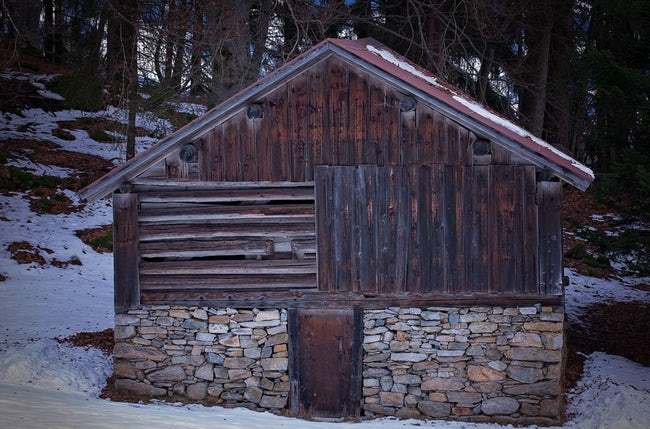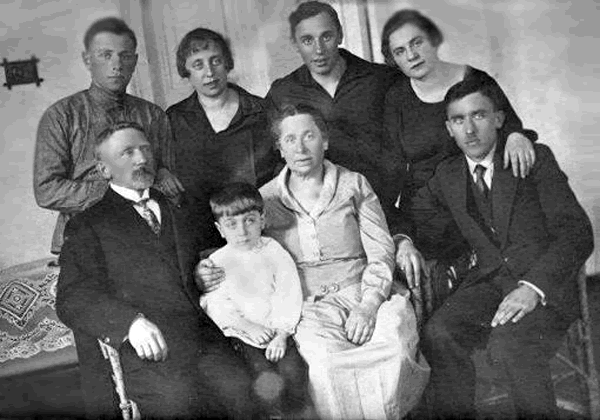poison
 As many of us know, from history, there was a time in United States history when alcohol was illegal. Some will debate if it should still be today, but it is not. Prohibition, as it was called, ran from 1920 to 1933. Prohibition in the United States was a nationwide constitutional ban on the production, importation, transportation, and sale of alcoholic beverages. The Prohibitionists were led by pietistic Protestants. The idea was to heal what they saw as an ill society beset by alcohol-related problems such as alcoholism, family violence and saloon-based political corruption. There are many alcohol related issues that really do fall into these categories, but you can’t make people stop something that they are intent on doing. Drugs are the same, but we have to draw the line somewhere, or we will have a “zombieistic” society.
As many of us know, from history, there was a time in United States history when alcohol was illegal. Some will debate if it should still be today, but it is not. Prohibition, as it was called, ran from 1920 to 1933. Prohibition in the United States was a nationwide constitutional ban on the production, importation, transportation, and sale of alcoholic beverages. The Prohibitionists were led by pietistic Protestants. The idea was to heal what they saw as an ill society beset by alcohol-related problems such as alcoholism, family violence and saloon-based political corruption. There are many alcohol related issues that really do fall into these categories, but you can’t make people stop something that they are intent on doing. Drugs are the same, but we have to draw the line somewhere, or we will have a “zombieistic” society.
As Prohibition progressed, many communities introduced alcohol bans and enforcement of these new prohibition laws became a topic of debate. Prohibition supporters were called “Drys.” The “Drys” presented prohibition as a battle for public morals and health. The progressives, along with the Democratic and Republican parties picked up on the movement, and it gained a national grassroots base through the Woman’s Christian Temperance Union. After 1900, it was coordinated by the Anti-Saloon League. There were those who opposed Prohibition, including the beer industry, who mobilized “Wet” supporters from the wealthy Catholic and German Lutheran communities, but the influence of these groups receded from 1917 following the entry of the United States into the First World War against Germany.
By a succession of state legislatures, the alcohol industry was curtailed, and finally ended nationwide under the Eighteenth Amendment to the United States Constitution in 1920. The Eighteenth Amendment passed “with a 68 percent supermajority in the House of Representatives and 76 percent support in the Senate,” as well as ratification by 46 out of the 48 states we had at the time. That enabled legislation, known as the Volstead Act, which set down the rules for enforcing the federal ban and defined the types of alcoholic beverages that were prohibited. Unlike most people think, not all alcohol was banned. For example, religious use of wine was permitted. Private ownership and consumption of alcohol were not made illegal under federal law, but local laws were stricter in many areas, with some states banning possession outright.
With prohibition came the criminal element associated with a refusal to comply. Criminal gangs gained control of the beer and liquor supply in many cities. By the late 1920s, a new opposition to Prohibition emerged nationwide. Critics attacked the policy saying it was actually causing more crime, lowering local revenues, and imposing “rural” Protestant religious values on “urban” America. In another bizarre twist of Prohibition in the United States, the United States government literally decided that if people would not comply with the new law, they would make the penalty much stiffer. When the people continued to consume alcohol despite its being banned, law officials got frustrated and decided to try a different kind of deterrent…death. They literally ordered the poisoning of industrial alcohols manufactured in the United States. These were products regularly stolen by bootleggers to use is making moonshine. By the end of Prohibition in 1933, the federal poisoning program is estimated to have killed at least 10,000 people.
Prohibition ended with the ratification of the Twenty-first Amendment, which repealed the Eighteenth  Amendment on December 5, 1933, though prohibition continued in some states. To date, this is the only time in American history in which a constitutional amendment was passed for the purpose of repealing another. Looking back on Prohibition, you will find researchers who say that alcohol consumption declined substantially due to Prohibition. They will also say that rates of liver cirrhosis, alcoholic psychosis, and infant mortality declined as well. Prohibition’s effect on rates of crime and violence is rather another story, because of the criminal element that made and sold alcohol in spite of the law. Nevertheless, Prohibition lost supporters every year it was in action, and lowered government tax revenues at a critical time before and during the Great Depression. I guys it all comes down to money in the end.
Amendment on December 5, 1933, though prohibition continued in some states. To date, this is the only time in American history in which a constitutional amendment was passed for the purpose of repealing another. Looking back on Prohibition, you will find researchers who say that alcohol consumption declined substantially due to Prohibition. They will also say that rates of liver cirrhosis, alcoholic psychosis, and infant mortality declined as well. Prohibition’s effect on rates of crime and violence is rather another story, because of the criminal element that made and sold alcohol in spite of the law. Nevertheless, Prohibition lost supporters every year it was in action, and lowered government tax revenues at a critical time before and during the Great Depression. I guys it all comes down to money in the end.
 Being Jewish during the Holocaust meant doing whatever it took to survive. For some, that means hiding in walls or changing one’s identity, then so be it. Still, there were other Jews who had no way of doing either of these things, so they had to make due with what they had. The path to freedom and life was a difficult one, no matter what path they chose. There were close calls, starvation, fear, and a lot of quiet. Two families decided that they had no choice, but to take refuge in a hayloft over a pigsty offered by the owner, Francisca Halamajowa, a kindly Polish Catholic woman, and her daughter, Helena, who protected these families.
Being Jewish during the Holocaust meant doing whatever it took to survive. For some, that means hiding in walls or changing one’s identity, then so be it. Still, there were other Jews who had no way of doing either of these things, so they had to make due with what they had. The path to freedom and life was a difficult one, no matter what path they chose. There were close calls, starvation, fear, and a lot of quiet. Two families decided that they had no choice, but to take refuge in a hayloft over a pigsty offered by the owner, Francisca Halamajowa, a kindly Polish Catholic woman, and her daughter, Helena, who protected these families.
The Malkin and Kinder families went into hiding in 1942, just before the town’s Jewish ghetto was liquidated, but unfortunately, after 4 year old Fay Malkin’s father and others were killed in an old brick factory nearby. Years later in 2011, Fay Malkin told of the heroic acts of Halamajowa. Fay Malkin almost died shortly before her 5th birthday, while hiding in that hayloft. She told the Holocaust remembrance gathering at UJA-Federation of New York on May 3rd: “Hitler didn’t win, we’re here.” Malkin tells of the 20 months that the family and two other families stayed hidden in order to stay alive…and to protect their protectors, who would have also lost their lives if they were caught.
The families worried that 4-year-old Fay would give them away with her crying. The little girl promised not to cry, but that is really a lot to ask of a little girl. Malkin couldn’t control herself once in the hayloft. After trying many other approaches, the adults finally made the excruciating decision to poison little Fay in order to save the rest. Malkin would have almost certainly been killed, if they were discovered. Malkin said her memory of the incident is faint, but she remembers pushing out the pill put in her mouth. Just before she was put in a bag to be buried, a doctor who was among those hiding felt a slight pulse. She was saved. “I became the miracle child,” she said. Having lived with the story her whole life, Fay smiled when she said that her crying after that was controlled by pillows. The families were saved, not only because of the kindness and courage of their fellow townspeople, but by the miracle of a little child that didn’t die. I realize that the fact that little Fay Malkin lived through the attempted poisoning may not seem like something that saved the families, but in reality, how could they have lived with themselves? Yes, they would have been alive, but they would have been almost as bad as the Nazis who were trying to kill them.
The Malkin family lived in Sokal, then part of Poland…now in Ukraine. Before World War II, there were 6,000 Jews in Sokal. By the end of the war, only about 30 had survived, and half of them were sheltered by Halamajowa. For 20 months, the families stayed in that tiny hayloft…never daring to leave or even make a sound. Halamajowa and her daughter, Helena, risked their lives by feeding them surreptitiously and otherwise helping them, all the while disguising their actions from her neighbors and the occupying German army. In July 1944, the town was liberated by the Soviets. When the Malkin and Kindler families were finally able to come down from the hayloft, they learned that Halamajowa had also been sheltering another Jewish family in a hole dug under her kitchen floor. What these two women did was above and beyond expectation, and very brave.
Of course, most Jews never spoke of the experience. They didn’t want to get anyone in trouble, and their  protectors felt the same way. They didn’t trust the government, even with the war over. Halamajowa died in Russia in 1960…never having revealed her secrets. Nevertheless, in 1986 she was honored at Yad Vashem as a Righteous Gentile…a fitting title. In 2007, Malkin, Maltz, and several others from the hayloft and celler families, returned to Sokal. The trip was part of a film project that led to No. 4 Street of Our Lady. A basis for the film was the diary kept by Fay’s cousin, Moshe Maltz. Malkin said it was important but highly emotional going back to Sokal, especially seeing where her father was killed. Included in the group traveling there were the two granddaughters of Halamajowa, who now live in Connecticut. I’m sure it was very emotional.
protectors felt the same way. They didn’t trust the government, even with the war over. Halamajowa died in Russia in 1960…never having revealed her secrets. Nevertheless, in 1986 she was honored at Yad Vashem as a Righteous Gentile…a fitting title. In 2007, Malkin, Maltz, and several others from the hayloft and celler families, returned to Sokal. The trip was part of a film project that led to No. 4 Street of Our Lady. A basis for the film was the diary kept by Fay’s cousin, Moshe Maltz. Malkin said it was important but highly emotional going back to Sokal, especially seeing where her father was killed. Included in the group traveling there were the two granddaughters of Halamajowa, who now live in Connecticut. I’m sure it was very emotional.

